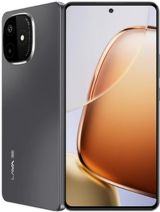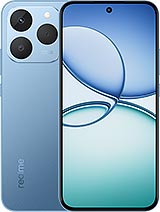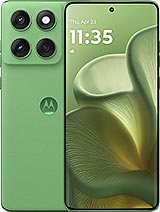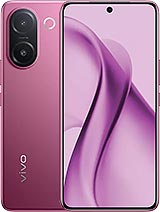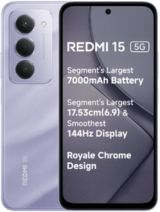Redmi 15 alternatives
Tap above to see alternatives.
Vivo T3 Pro alternatives
Tap above to see alternatives.
Vivo T3 Pro
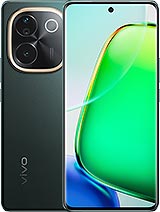
Vivo T3 Pro
-
Snapdragon 7 Gen 3
4 nm
-
5500 mAh
80W
-
6.77"
1080x2392 pixels
-
50 MP
4K@30/60fps
- Specs
2x2.3 GHz Cortex-A78
6x2.0 GHz Cortex-A55
1x2.63 GHz Cortex-A715
3x2.4 GHz Cortex-A715
4x1.8 GHz Cortex-A510
8GB 128GB (UFS 2.2)
8GB 256GB (UFS 2.2)
8GB 256GB (UFS 2.2)
f/1.75, (wide), 1/2.88" 0.61μm, PDAF
Auxiliary lens
f/1.8, (wide), 1/1.95", 0.8µm, PDAF, OIS
8 MP
f/2.2, 120˚ (ultrawide)
1080p
f/2.2, (wide)
f/2.5, (wide), 1/3.0", 1.0µm
SIM1: Nano, SIM2: Nano
7 5G bands
n1, n3, n5, n8, n28, n40, n78
8 5G bands
n1, n3, n5, n8, n28, n40, n77, n78
In this performance comparison, the Vivo T3 Pro with its Qualcomm Snapdragon 7 Gen 3 (4nm) performs better than the Redmi 15 with the Qualcomm Snapdragon 6s Gen 3 (6nm), thanks to superior chipset efficiency.
Both phones offer the same 2 years of OS update support. For security updates, Redmi 15 offers 4 years of support compared to Vivo T3 Pro's 3 years.
Vivo T3 Pro features a superior AMOLED display, while Redmi 15 comes with an LCD panel. In terms of smoothness, Redmi 15 offers a higher 144 Hz refresh rate, ensuring fluid scrolling and animations. Vivo T3 Pro also boasts a brighter screen with 4500 nits of peak brightness, enhancing outdoor visibility. Both phones have the same screen resolution.
Redmi 15 comes with a larger 7000 mAh battery, which may offer longer usage on a single charge. Vivo T3 Pro also supports faster wired charging at 80W, compared to 33W on Redmi 15. Redmi 15 supports wireless charging at -2W, while Vivo T3 Pro does not support wireless charging.
Both phones feature the same IP64 rating for water and dust resistance.
- Redmi 15 – Check price here
¹ Scores can vary even with the same chipset due to RAM, thermals, and software optimization.





